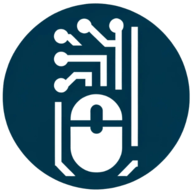3 Techniques to Stay Engaged in Long-Term Software Projects
Staying engaged in long-term software projects can be a challenge for even the most dedicated professionals. This article explores proven techniques to maintain focus and motivation throughout extended development cycles. Drawing on insights from industry experts, these strategies offer practical solutions for software teams looking to boost productivity and project success.
- Build Relationships and Trust
- Seek Customer Feedback and Switch Focus
- Empower Teams with Servant Leadership and AI
Build Relationships and Trust
I stay motivated by remembering that long-term projects are less about the code and technology and more about the personal relationships I'm building while helping others work towards their goals and develop their vision. If I'm still involved after months or years, it usually means the team and company value my perspective and the context I bring. Personally, that trust matters to me. I also find satisfaction in watching the product evolve: seeing what works, what doesn't, and being part of shaping it into something better over time.
Seek Customer Feedback and Switch Focus
From the perspective of a manager, I can say that long-term projects often lead to demotivation not because of the tasks themselves, but due to the feeling that you are investing hours and energy without being able to clearly see the results. Over time, meetings transform into conversations 'about the future', and you realize that while you've contributed, there's nothing tangible to track your progress.
What truly keeps me motivated is when the customer follows up with an update, a new request, or a note of gratitude for the solution that actually helped. It serves as a reminder that even the informal aspects of the work were meaningful.
When it comes to strategy, switching focus can be surprisingly effective. Sometimes it involves personal matters, while other times it might be another area of responsibility, such as marketing. This helps me reset, step out of the mental loop, and return to work with renewed clarity.
Empower Teams with Servant Leadership and AI
As a hands-on leader and self-proclaimed Chief Tinkering Officer, I'm always on the lookout for new technologies and leadership practices that can elevate how teams operate and thrive. One approach I'm particularly passionate about is servant leadership -- a philosophy that has shaped my leadership style across environments ranging from fast-paced startups to large, matrixed tech organizations.
What draws me to servant leadership is its core principle: put the team's growth and success at the forefront. It is about creating a culture of trust, ownership, and autonomy -- where individuals feel empowered to make decisions, take initiative, and bring their unique strengths to the table. When people feel trusted and have the space to operate with autonomy -- it fuels innovation, engagement, and a deep sense of purpose, while increasing performance.
Lately, I've been exploring how to amplify this approach with emerging technologies -- especially in the AI arena, including Generative AI, large language models (LLMs), prompt engineering, and agentic workflows. These tools hold incredible potential to reduce friction, eliminate repetitive tasks, and streamline workflows. But more importantly, I see them as a way to enhance autonomy: enabling team members to move faster, make informed decisions, and focus their energy on creative, high-impact, and critical work.
Servant leadership isn't just a trend for me -- it is a mindset. And when combined with the right technology, it becomes a multiplier. I believe the future of leadership lies in creating an environment where people are empowered, supported, and equipped with the best tools to do their best work -- and I am super excited to keep experimenting and evolving in that direction.




